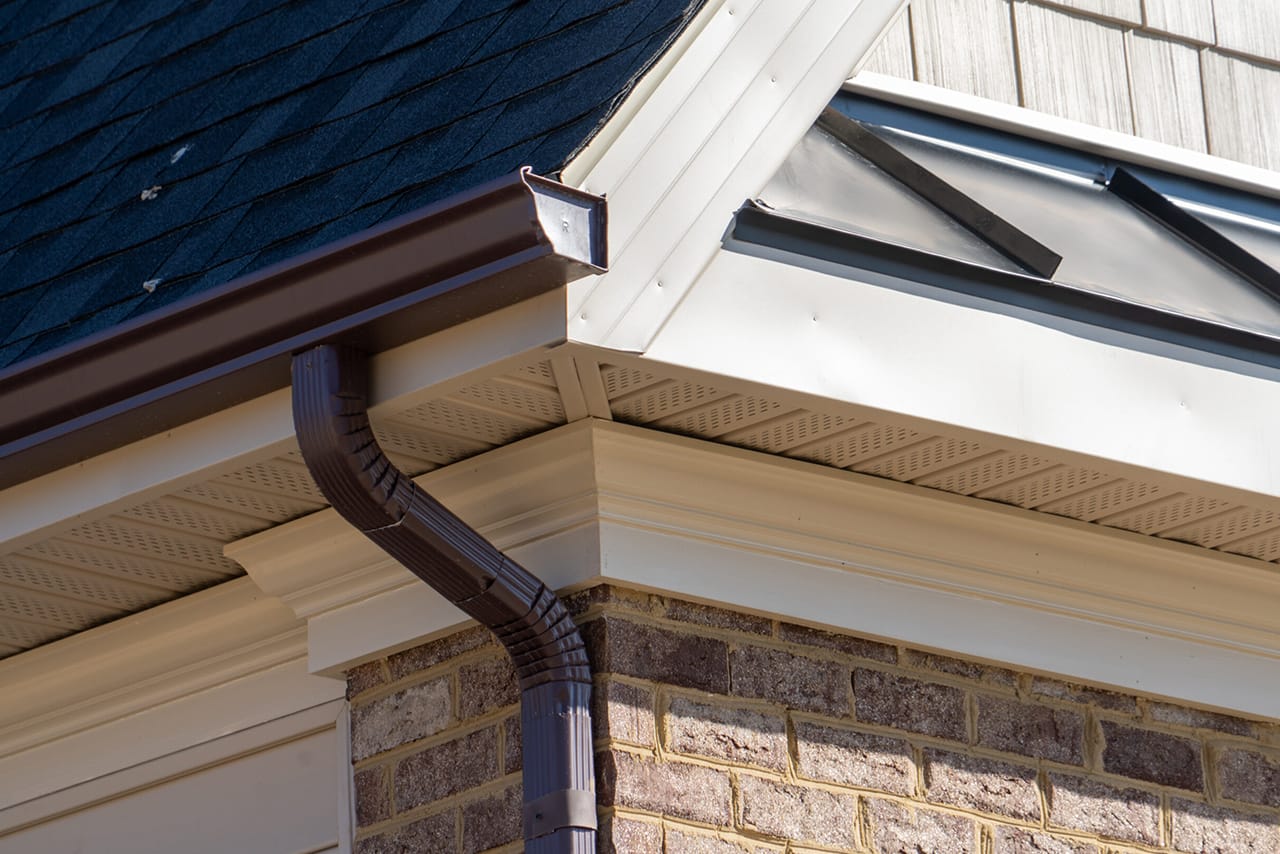Importance of gutter system maintenance
Regular maintenance of your gutter system is crucial to prevent water damage to your home. When gutters get clogged with debris, water can overflow and seep into your walls and foundation. This can lead to costly repairs and potential structural damage. By ensuring your gutters are free from leaves, twigs, and other debris, you can avoid these issues and protect your home from water damage.
Signs that your gutter system needs maintenance
If you notice any of these signs, it’s time for some gutter system maintenance:
- Overflowing water: If you see water overflowing from your gutters during rainfall, it could mean that your gutters are clogged or not properly sloped.
- Gutter sagging: A noticeable sag in your gutter could indicate that it’s clogged with debris or the hangers need adjusting.
- Cracks or splits: Cracks or splits in the gutter can lead to leaks and should be addressed promptly.
- Plant growth: If plants or weeds are growing out of your gutters, it’s a clear sign that they are clogged and need cleaning.
- Peeling paint or rust: Peeling paint or rust spots on your gutters suggest that water is not properly flowing through the system and may require maintenance.
- Water damage: Water stains on the siding or foundation of your house could indicate that your gutters are not directing water away effectively.
Cleaning your gutter system
Cleaning your gutter system is an essential part of preventative maintenance. It is recommended to clean your gutters at least twice a year, in the spring and fall, to prevent clogs and water damage to your home. Here’s what you need to do:
- Use a sturdy ladder to safely access the gutters.
- Wear gloves to protect your hands from debris.
- Remove leaves, twigs, and other debris from the gutters by hand or with a small trowel.
- Use a hose to flush out any remaining dirt and check for proper water flow.
- Inspect the downspouts for clogs and clear them if necessary.
Inspecting gutter system for damage
Inspecting your gutter system regularly is essential to prevent any damage. Look for signs of cracks, rust, or sagging in the gutters. Also, check for clogs and ensure that the downspouts are not blocked. Address any issues promptly to avoid further damage to your gutter system.
Preventing clogs and blockages
To prevent clogs and blockages in your gutter system, it’s important to regularly clean out any debris such as leaves, twigs, and dirt that can accumulate. You can use a gutter scoop or a garden hose to remove the buildup and ensure that water can flow freely through the gutters. Additionally, consider installing gutter guards to help prevent debris from entering and clogging the system. Regular maintenance will save you from potential water damage and structural issues caused by clogged gutters.
Repairing and replacing gutter components
When it comes to repairing or replacing gutter components, it’s important to consider the following tips:
- Regularly check for any cracks or damage in the gutter system, especially after heavy storms or during the fall season when leaves are more likely to clog the gutters.
- Ensure that the downspouts are securely attached and free from any blockages to allow for proper drainage.
- When replacing gutter components, opt for high-quality materials that are durable and can withstand the elements.
- If there are any loose or damaged components, such as brackets or hangers, they should be promptly repaired or replaced to maintain the integrity of the gutter system.
Installing gutter guards
Gutter guards can be a great addition to your gutter system, as they help prevent clogs and reduce the need for frequent cleaning. The installation process involves the following steps:
- Assess Your Gutter System: Before installing gutter guards, it’s important to assess the condition and type of your existing gutter system to determine the most suitable type of guards.
- Choose the Right Type: There are various types of gutter guards available, including mesh, bottle brush, and reverse curve. Choose the type that best suits the needs of your home and the local climate.
- Proper Installation: Ensure that the gutter guards are installed correctly and securely to effectively protect your gutter system from debris and leaves.
- Consider Professional Help: While some homeowners may choose to install gutter guards themselves, hiring a professional for installation can ensure that the guards are properly fitted and provide optimal protection.
By installing gutter guards, you can save time and effort on gutter maintenance while protecting your home from potential water damage.
Seasonal maintenance for gutter systems
During the fall, it’s important to clean your gutters to remove leaves and debris that may have accumulated over the summer. This can prevent clogs and water buildup, which could cause damage to your home. It’s also a good idea to inspect your gutters in the spring to ensure they are in good condition after the winter months. Regular maintenance can help you avoid costly repairs and keep your gutters functioning properly throughout the year.
Professional gutter system maintenance
Hiring a professional for gutter system maintenance can ensure that your gutters are properly cleaned, inspected, and maintained. Professionals have the expertise to identify and address any issues with your gutter system, including clogs, leaks, and damage. Additionally, their specialized equipment allows for a thorough and efficient cleaning process, helping to prevent potential water damage to your home. Regular professional maintenance can extend the lifespan of your gutter system and minimize the risk of costly repairs in the future.
Summary of preventative maintenance tips
Gutters are an essential part of maintaining your home’s structural integrity. To keep them in good condition, it’s important to regularly clean and inspect them. Here are some basic preventative maintenance tips for your gutter system:
- Clean your gutters at least twice a year, preferably in the spring and fall, to remove debris and prevent clogs.
- Inspect for leaks or damage, including loose or sagging gutters, and promptly repair any issues to avoid water damage.
- Trim overhanging branches to prevent leaves and branches from falling into the gutters and obstructing the flow of water.
- Check downspouts for blockages and ensure they are securely attached to the gutters to direct water away from the foundation of your home.




